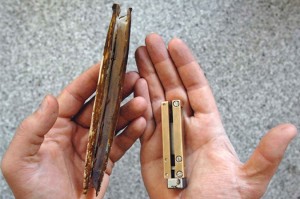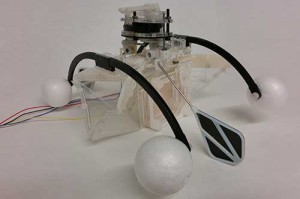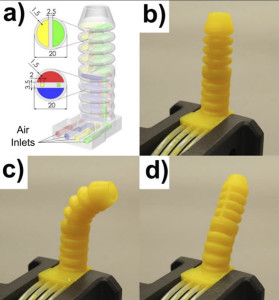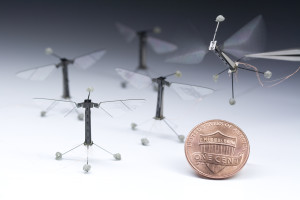More then ever scientists are using a nature-inspired approach to build biomimimetic robots. Developed after through investigation of biological systems, these robots are a wonder of engineering and artificial intelligence research.
Here are some examples of small biomimetic robots, inspired by sea creatures and insects, developed by scientists around the world
The RoboClam
Inspired by the Atlantic razor clam, this small energy efficient robot, developed by Amos Winter at MIT can dig holes into the sand like a razor clam. This was possible since the researchers have understood the principle behind this clam’s ability — localized fluidization — and were able to give a robotic digging clam similar abilities. The RoboClam may be useful to monitor a biological situation under water or to bury anchors and terminate underwater mines. “And the study of the robot gives deeper insight into the important mechanics behind burrowing through localized fluidization” says Amos Winter. https://youtu.be/bztw9PUiRss
Row-bot
Inspired by the water beetle, at the Bristol Robotics Laboratory, a group of scientists have been developing a robot called Row-bot that can swim in remote locations by harvesting energy directly from the water using a microbial fuel cell as an artificial stomach.
“When it is hungry the Row-bot opens its soft robotic mouth and rows forward to fill its microbial fuel cell (MFC) stomach with nutrient-rich dirty water. It then closes its mouth and slowly digests the nutrients”. The Row-bot may be useful for environmental clean-up of contaminants in natural and man-made disasters.
3D-printed soft robotic tentacles
Using an elastomer and a 3D printing technique, engineers at Cornell University have developed a method to re-create soft actuators. Using their new technique, a digital mask projection stereolithgraphy system, they have produced pairs of actuators that mimic the function of octopus tentacles.
As reported in a paper published in the journal Bioinspiration & Biomimetics, the researchers believe that “this nascent printing process for soft actuators is a promising route to sophisticated, biomimetic systems” https://youtu.be/BZ5W7LyyKL0
The RoboBee
This very small flying robot, inspired by the biology of a bee, was initially developed by researchers from the Wyss Institute at Harvard University in 2004. The RoboBee, designed at Robert J Wood’s lab, is a micro-robot, smaller than a fingernail, that flies and hovers like an insect, flapping its transparent wings 120 times per second. The research effort around the RoboBee project is believed to “foster novel methods for designing and building an electronic surrogate nervous system able to deftly sense and adapt to changing environments; and advance work on the construction of small-scale flying mechanical devices”. Scientist anticipate that these devices may have an impact in advancing fields ranging from entomology and developmental biology to amorphous computing and electrical engineering. http://wyss.harvard.edu/viewpage/428/
The Tabbot
The robot Tabbot has the looks of a cartwheeling desert-dwelling spider and it is named after tabacha, which means spider in the local Berber language in northern Africa. According to its developer, engineer Ingo Rechenberg “…such a means of locomotion would be an advantage in a device meant to navigate the rough surface condition on Mars“. Rechenberg, who teaches biomimetics at the Technical University of Berlin, believes that this kind of tumbling robots can be used in agriculture as well as on the ocean floor. https://youtu.be/OHo32JrkDRk For more biomimetic robots see our previous blogs and Biomimetic robots at Robot SafariEU in London and Biomimetics: Where’s it at?









